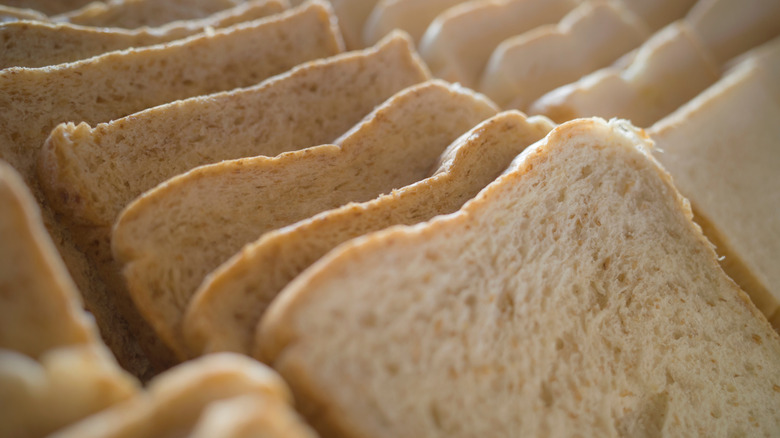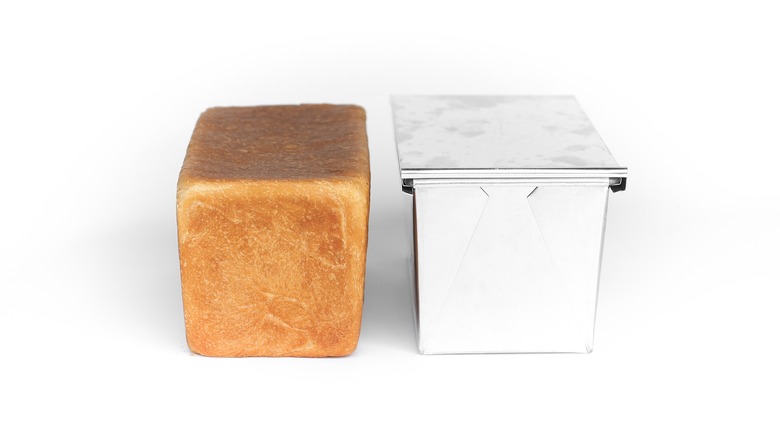How The Pullman Loaf Pan Got Its Name
Considering almost all bread is made with the same ingredients of flour, water, yeast, and salt, it's amazing how many different varieties are made around the world. When it comes to a singular food group, bread history is rich, fascinating, and full of stories that tell us as much about us as people as it does about bread itself. Food is culture and each kind of bread has its own story.
According to NPR, our ancestors started baking before they even started farming, which is a relatively new archeological discovery. The exact time humans started making bread is unknown, but Britannica acknowledges that bread was being made by our Neolithic ancestors around 12,000 years ago. And, as humanity has evolved in the centuries since, so has our bread.
Depending on locally available sources of wheat and grains, humans around the world have made a wide variety of breads for a wide variety of reasons. And, when it comes to each kind of bread having a fascinating story to tell about the people who named it, Pullman loaves are no exception.
Pullman loaf pans got their name from the Pullman railway system
Examining the bread itself, a Pullman loaf is a long loaf of white bread with completely flat sides or crust, reports Hilistar. The bread bakes in a Pullman loaf pan, which looks like a long rectangular box and includes a lid that completely seals the pan. The resulting bread has a strong, sturdy crust that makes it very easy to cut solid slices for perfect sandwiches.
So how did a Pullman loaf get its name? Pullman loaves were baked in box pans by European bakers in the 18th century before they were called Pullman loaf pans, per Epicurious, and, according to Pullman History, got their name later, after Pullman railway workers discovered how easy it was to stack large quantities of the bread on the flat surfaces of their dining cars.
Because of the practical storage abilities of the bread on these trains, people started associating them with the trains themselves. Thus, the Pullman loaf nomenclature was born — as was the resulting story that ties a specific history of people and their food, forever.

